Magnetic field lines (purple) are twisted as they are dragged inward toward a swirling, dusty disk surrounding a young star in this artist’s conception.
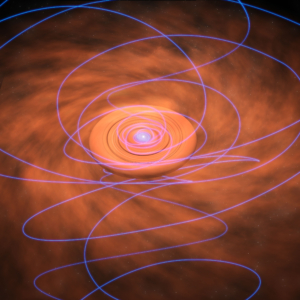
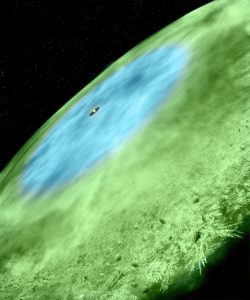
Finding Ice in Baby Solar Systems
Artist concept of the so-called “snow line” in the young planet-forming system known as TW Hydrae. A snow line is where particles become icy and can more easily stick together to make larger chunks when they collide. This is one way for planets to form. ALMA has found water-covered ice grains in this system’s inner disk (4.5 — 30 AU, blue) and carbon monoxide (CO) ice-covered grains in the outer disk (>30 AU, green). The transition from blue to green marks the CO snow line.
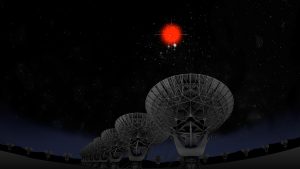
Fast Radio Burst tracked down by VLA
For the first time, astronomers pinpointed the location of a fast radio burst (FRB), which is a phenomena where a very strong burst of radio emission occurs. Each FRB lasts approximately 5 milliseconds (one second= 1,000 milliseconds)
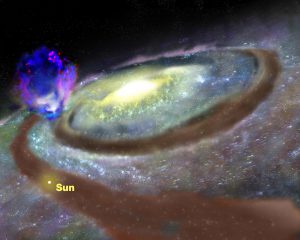
Superbubble Labeled
Astronomers using the National Science Foundation’s Robert C. Byrd Green Bank Telescope (GBT) have discovered a huge “superbubble” of hydrogen gas rising nearly 10,000 light-years above the plane of our Milky Way Galaxy. The gas may be driven by supernova explosions and the intense stellar winds from an unseen cluster of young stars in one of our Galaxy’s spiral arms. This giant gas bubble contains about a million times more mass than the Sun and the energy powering its outflow is equal to about 100 supernova explosions. The superbubble is nearly 23,000 light-years from Earth and is estimted to be between 10-30 million years old. The astronomers discovered it by combining numerous smaller images made with the GBT into one large image.
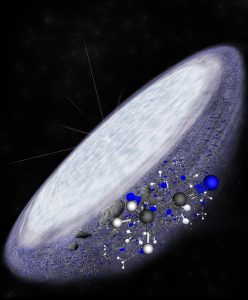
Hints that Prebiotic Chemistry Is Universal
Artist impression of the protoplanetary disk surrounding the young star MWC 480. ALMA has detected the complex organic molecule methyl cyanide in the outer reaches of the disk in the region where comets are believed to form. This is another indication that complex organic chemistry, and potentially the conditions necessary for life, is universal.

Illustration of proposed millimeter-wavelength array
In 1983, eminent radio astronomers in the United States met to discuss priorities for an array of millimeter-wavelength telescopes. By 1990, Associated Universities, Inc. had a proposal in to the National Science Foundation for our Millimeter Array, or MMA, with this drawing shown here. The NSF approved further MMA planning in 1994, then Congress approved funding in 1997. By then, NRAO had begun conversations with Japan (and later Europe) about combining similar millimeter-wave array projects into one, which became, in 2000, ALMA.





